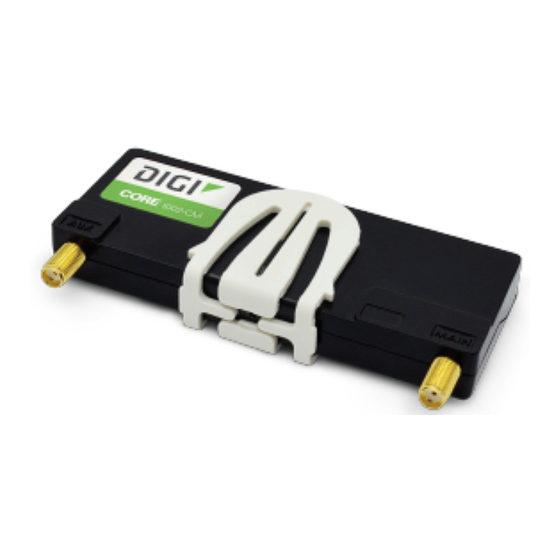
Digi AnywhereUSB Plus Manuals
Manuals and User Guides for Digi AnywhereUSB Plus. We have 3 Digi AnywhereUSB Plus manuals available for free PDF download: User Manual
Digi AnywhereUSB Plus User Manual (1101 pages)
Table of Contents
-
Warranty6
-
Supported os24
-
Command Line39
-
Hardware65
-
Setup Tab95
-
Advanced Tab95
-
Stop the Service117
-
Service Settings123
-
Group Settings123
-
Client Settings124
-
Debug Logging127
-
Rename a Group128
-
Local Webui144
-
Disable Surelink196
-
Current Value236
-
Current Value260
-
Delete a LAN274
-
DHCP Servers275
-
Current Value297
-
Bridging305
-
Console Port315
-
Wi-Fi318
-
Configure DNS389
-
Show DNS Server395
-
SNMP Security396
-
Download Mibs402
-
Local Users507
-
Default User507
-
Ldap533
-
Firewall556
-
Packet Filtering569
-
Web Filtering595
-
Downgrading628
-
Enable FIPS Mode646
-
Watchdog Service663
-
Intelliflow670
-
Pinhole Method700
-
Learn more707
-
View System Logs714
-
View Event Logs716
-
Destination Port742
-
File System748
-
IP Routing759
-
Routing Services774
-
Dynamic DNS778
-
Vrrp783
-
Configure VRRP783
-
Configure VRRP787
Advertisement
Digi AnywhereUSB Plus User Manual (815 pages)
Table of Contents
-
-
User Roles20
-
Terminology21
-
Supported os21
-
-
-
Optional22
-
-
-
-
Interfaces
103-
-
Disable Surelink127
-
Bridging207
-
Console Port
215 -
Services
217-
Configure DNS237
-
Show DNS Server243
-
-
System Time279
-
-
Local Users326
-
Ldap350
-
Firewall
371-
Packet Filtering382
-
-
Monitoring
439 -
-
Learn more466
-
Diagnostics
468-
-
View System Logs470
-
View Event Logs472
-
-
Digi AnywhereUSB Plus User Manual (163 pages)
Table of Contents
-
Get Started
10 -
-
-
-
Advanced Tab53
-
Interface54
-
-
Advertisement
Advertisement


